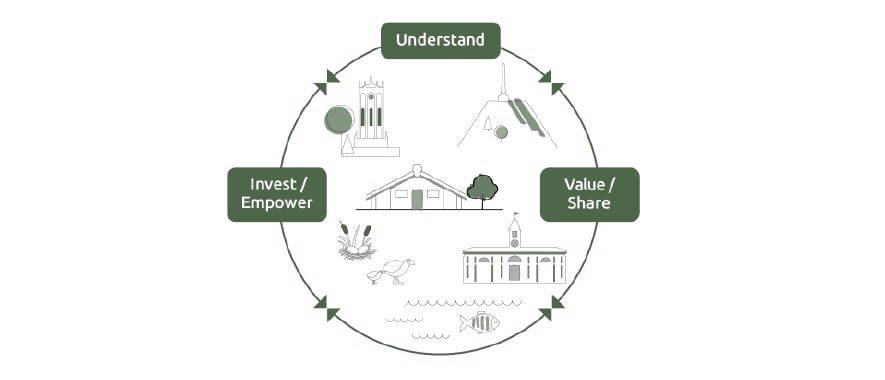Some council services will be unavailable over the Christmas and New Year break.
Check if you need to apply or order before Friday 19 December 2025.
Cultural heritage is the term used to describe the ways of living developed by a community and passed on from generation to generation.
These include:
It is also the legacy of knowledge, things and intangible attributes of a group or society passed from generation to generation. Cultural heritage includes:
Auckland's cultural heritage is rich and diverse and includes Māori Indigenous people of Aotearoa New Zealand. Māori incorporates mana whenua and mataawaka. and non-Māori heritage.
It includes the Auckland War Memorial Museum / Tāmaki Paenga Hira and the Auckland Domain/Pukekawa.
It encompasses the extensive archaeological landscapes of
It includes post-war architecture such as the Group Architect houses, engineering feats such as the Grafton Bridge, and our Victorian and Edwardian buildings.
Our cultural heritage places comprise sites, features, areas, townscapes, streetscapes, landscapes, settlements, and other historical places.
Many Aucklanders are passionate about our cultural heritage.
Our cultural heritage adds to the richness of our lives by reinforcing our sense of history and identity, and helps define what is distinctive about Auckland.
It enriches our environment, provides authenticity to our spaces, and continuity in our communities. Our cultural heritage is a source of pride.
Cultural heritage is of fundamental importance to tangata whenua, their culture and traditions.
Cultural heritage is addressed in a number of parts of the Auckland Plan 2050.
Recognising the value of our cultural heritage and the importance of its protection is a core component of the Environment and Cultural Heritage outcome.
The key role that our shared cultural heritage plays in building cohesive and connected communities is addressed in the Belonging and Participation outcome. The specific role of built heritage in shaping our homes, places and spaces is addressed in the Homes and Places outcome.
Managing heritage comprises three key phases:

The connection between understanding, investing/empowering and valuing/sharing.